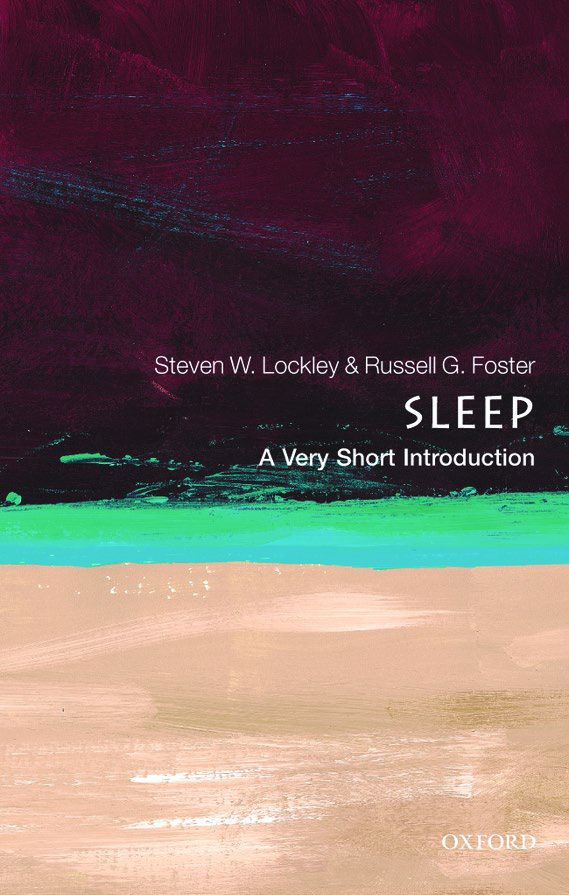
Physiology News Magazine
Book review
Sleep: A Very Short Introduction By Steven Lockley and Russell Foster
Membership
Book review
Sleep: A Very Short Introduction By Steven Lockley and Russell Foster
Membership
Keith Siew & Yasmin
University of Cambridge
https://doi.org/10.36866/pn.94.45

Humans, like many species, live a dual existence divided between the waking world and the realm of dream-filled slumber. Yet, despite spending almost a quarter of our lives asleep, this significant portion of our being still remains one of the greatest physiological mysteries. Why do we sleep? What are its evolutionary origins? What are the consequences of losing sleep?
Russell Foster and Steven Lockley, world leaders in circadian rhythm and sleep, are perhaps the best equipped transatlantic double act capable of addressing these fundamental questions. Throughout the nine chapters of the pocket-sized, 152 page Sleep: A Very Short Introduction they weave a captivating tale intertwining the science of sleep with its history and sociological and pathophysiological implications.
You may have always known that not getting enough sleep was ill advised, though with the many pressures of work and social life, sleep often took a back seat to other “more important” things. Having read the litany of severe health and safety consequences attributable to sleep deprivation, one must re-evaluate priorities. Alarmingly, shift workers with prolonged sleep-loss are at 50% higher risk of cancers. Merely, losing an hour’s sleep during daylight savings increases heart attacks by 5% for the three weeks after and road accidents by 20%. These startling facts raised by Foster and Lockley cannot simply be ignored! Their concept of ‘second-hand sleepiness’ is an intriguing one: why is it acceptable for sleepy drivers or healthcare workers to endanger others? For example, changing doctors’ shift hours from 24 to 16 reduces attentional failures at night by half and medical errors by 36%. Not so long ago you would hear little rebuke for drink-driving or smoking in public; perhaps the radical societal shifts in attitude towards sleep they propose are truly needed for all our health and well-being. After all, how did we survive before the 24/7 society?
Apart from the portents of sleep-deprivation, the reader will garner insights into why we are either an ‘early bird’ or ‘night owl’, cheating jet lag and the dos and don’ts for a good night’s sleep. In particular, parents may appreciate the reasons why their teenage son or daughter is zombie-like to a morning class. As the authors state ‘…teenagers are essentially living in another time zone, so having teenagers get up for school at 7am is like asking adults to wake up at 4am…’
For a very short introduction, this book is an enlightening and fascinating exploration of the neurological enigma. Perhaps ‘Chapter 5 – The Seven Ages of Sleep’ will have the most impact on readers. For the first-time parents, an understanding of their newborn’s ultradian rhythms (<24 hours) can help to develop strategies to minimise parental sleep loss. On the other end of the spectrum, for an estimated 44.4 million people worldwide who suffer with dementia, making changes in care homes, such as increasing indoor brightness during daylight hours, will stabilise the circadian clock improving sleep quality and reducing cognitive decline.
While most of the book is accessible to a non-expert audience, those without a background in neurophysiology may find ‘Chapter 3 – The Sleeping Brain’ challenging (the authors break the “fourth wall” to warn us and advise a cup to coffee before diving in!). A revised edition would be most welcome to correct some typos and clarify the more technical sections for the lay person, although the book would benefit most from a glossary of terms for the non-sleep/neurophysiology expert.
We highly recommend Sleep: A Very Short Introduction as a must have for each shelf. You’ll be astounded by the difference a good night’s sleep can make!
Would you like to submit a book review to Physiology News? Please get in touch with us on magazine@physoc.org
